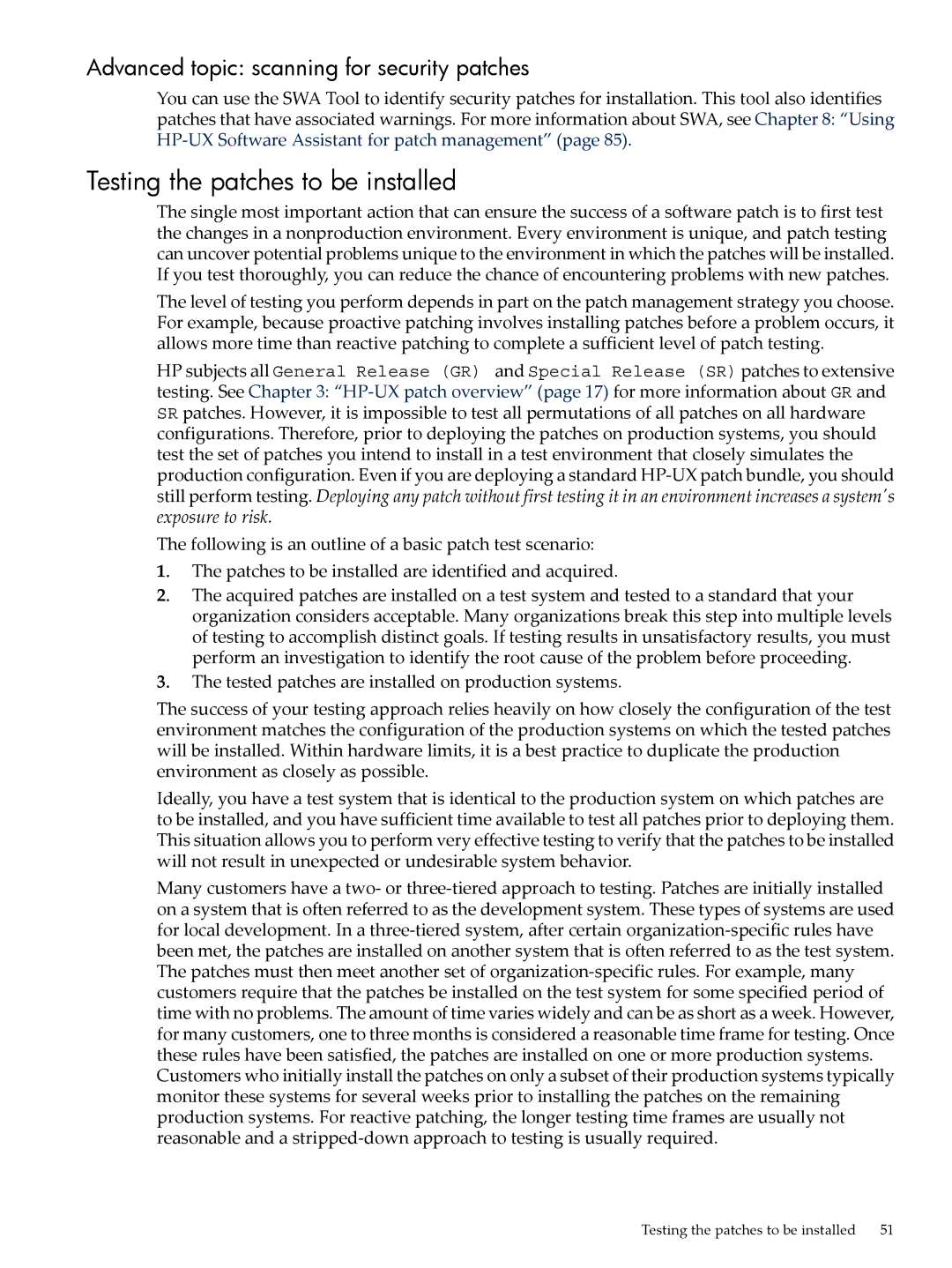Advanced topic: scanning for security patches
You can use the SWA Tool to identify security patches for installation. This tool also identifies patches that have associated warnings. For more information about SWA, see Chapter 8: “Using
Testing the patches to be installed
The single most important action that can ensure the success of a software patch is to first test the changes in a nonproduction environment. Every environment is unique, and patch testing can uncover potential problems unique to the environment in which the patches will be installed. If you test thoroughly, you can reduce the chance of encountering problems with new patches.
The level of testing you perform depends in part on the patch management strategy you choose. For example, because proactive patching involves installing patches before a problem occurs, it allows more time than reactive patching to complete a sufficient level of patch testing.
HP subjects all General Release (GR) and Special Release (SR) patches to extensive testing. See Chapter 3:
The following is an outline of a basic patch test scenario:
1.The patches to be installed are identified and acquired.
2.The acquired patches are installed on a test system and tested to a standard that your organization considers acceptable. Many organizations break this step into multiple levels of testing to accomplish distinct goals. If testing results in unsatisfactory results, you must perform an investigation to identify the root cause of the problem before proceeding.
3.The tested patches are installed on production systems.
The success of your testing approach relies heavily on how closely the configuration of the test environment matches the configuration of the production systems on which the tested patches will be installed. Within hardware limits, it is a best practice to duplicate the production environment as closely as possible.
Ideally, you have a test system that is identical to the production system on which patches are to be installed, and you have sufficient time available to test all patches prior to deploying them. This situation allows you to perform very effective testing to verify that the patches to be installed will not result in unexpected or undesirable system behavior.
Many customers have a two- or
Testing the patches to be installed | 51 |
